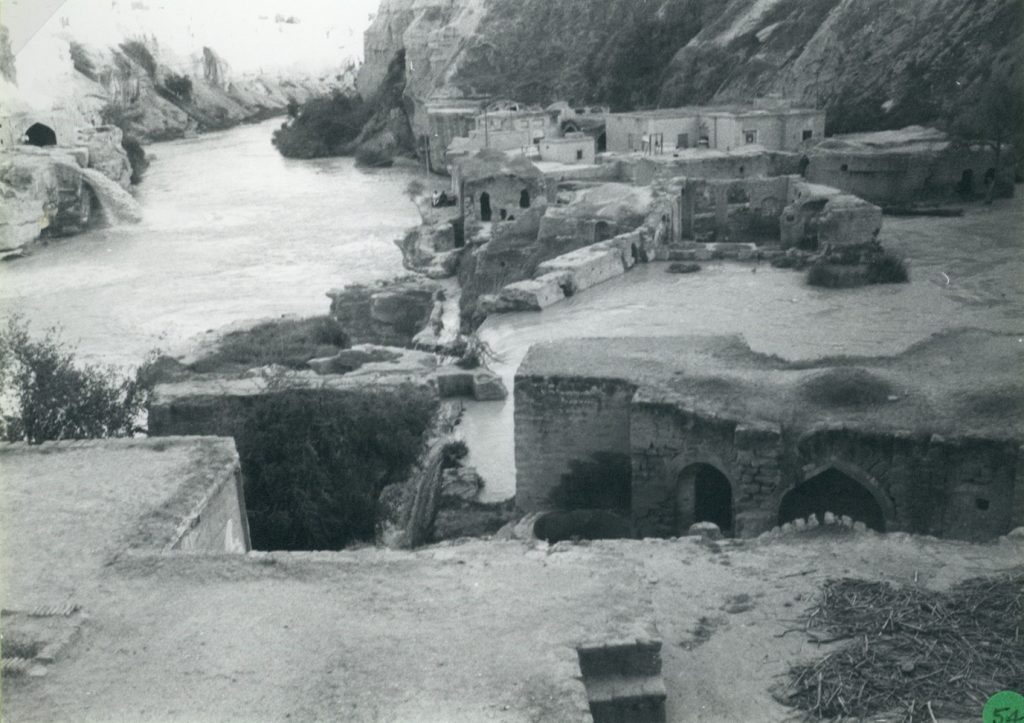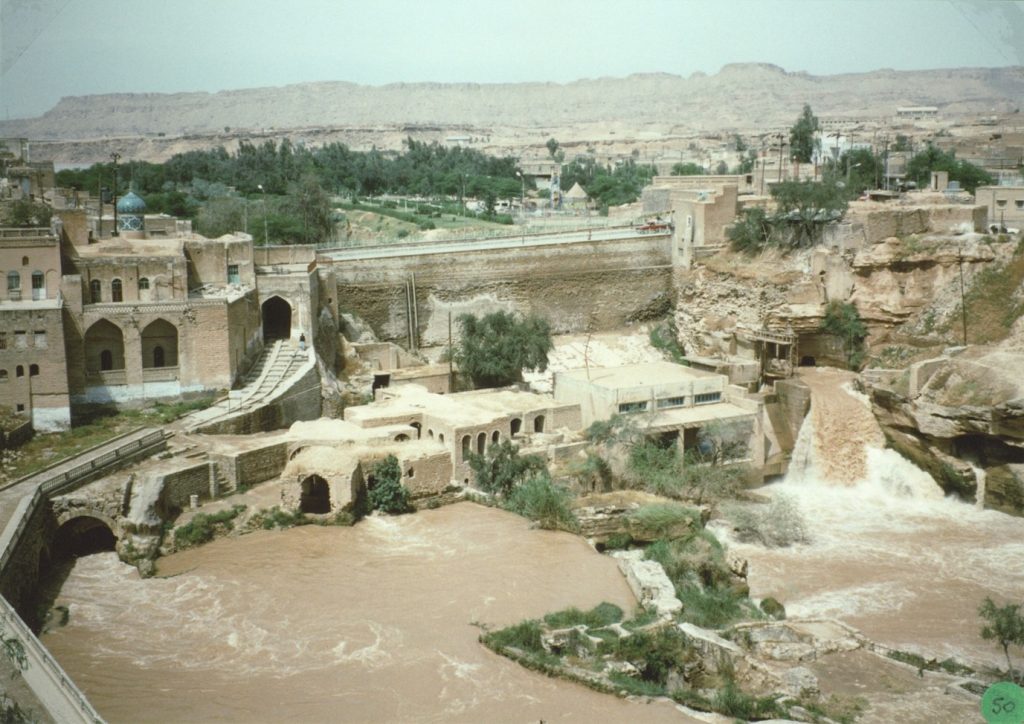
The mills of Shushtar built below the dam on the river Karun.
In 1992 Michael Harverson visited Iran to look for watermills. One of the most memorable sites he visited was Shushtar in the Khuzestan province. In this region are to be found the largest rivers in Iran, flowing from the Zagros mountains to the Persian Gulf. On the river Karun is the ancient bridge of Valerian, said to have been built by Roman soldiers captured in battle by the Sassanid ruler Shapur I at the Battle of Edessa in 260 AD.
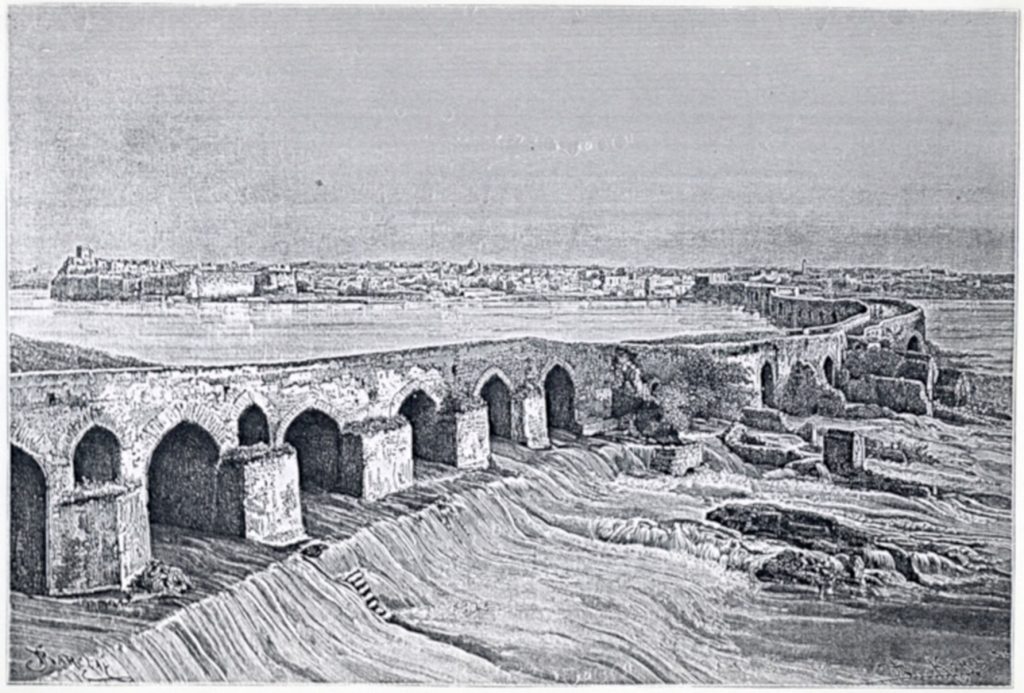
The bridge of Valerian at Shushtar, 1887.
The original dam below the bridge was mentioned in medieval times by the poet Ferdowsi – it was later rebuilt further upstream c 1840 and it is here that the mills are to be found. The British politician and traveller George Curzon, Marquess of Kedleston, described the scene in 1890:
“At a short distance above the dam four or five tunnels have been pierced in the rock on either side of the gorge below the canal level, and through these the water is diverted from the stream, emerging with a rush from several openings on the lower side of the bund and turning in its passage a large number of wheels for the grinding of barley. The spectacle below the dam on the town side is indeed a very curious and interesting one, for there a number of pools are formed by the water as it gushes from the tunnels and at different levels the mills have been placed so as to utilise the force, the grindstones revolving in small circular towers. The water passing on falls with a splash and a roar into the canal below.”
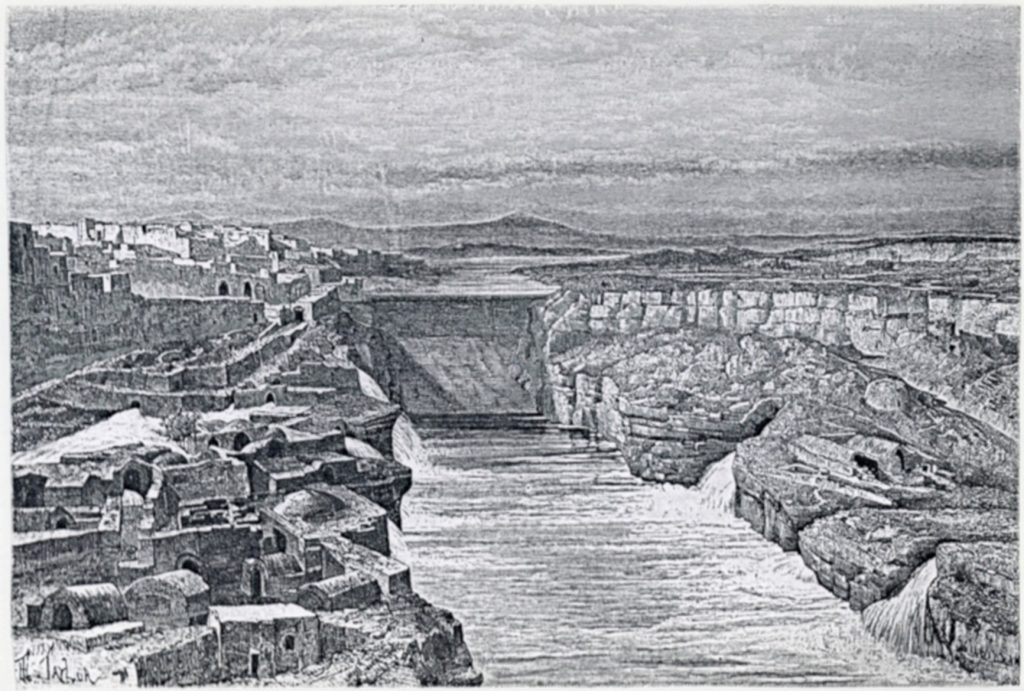
The mills of Shushtar in 1887
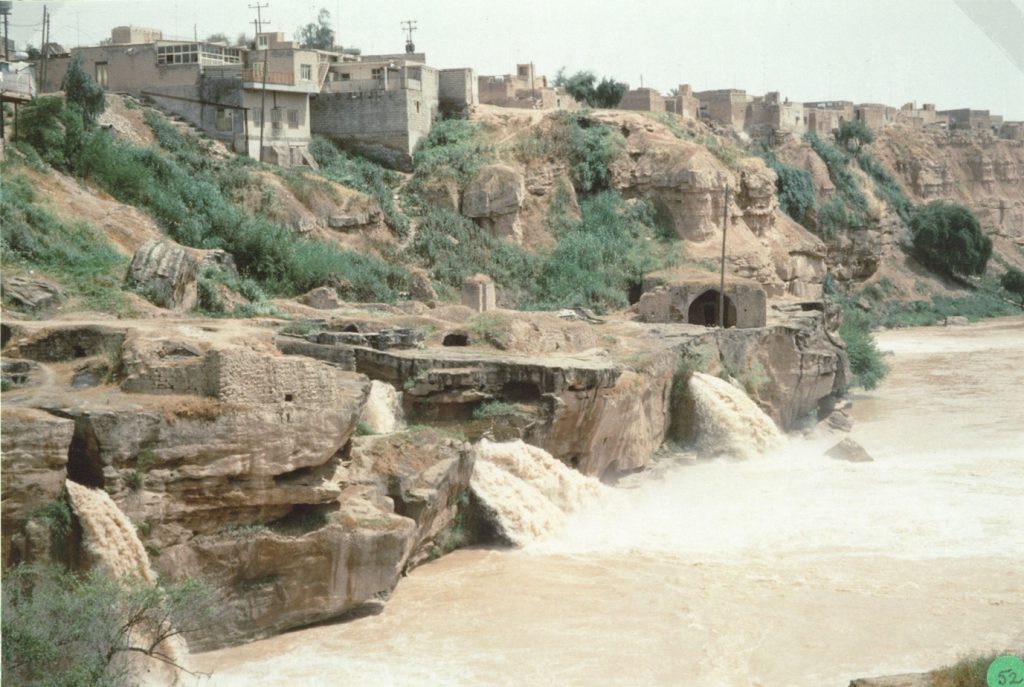
The mills in 1992.
Michael Harverson was met with a very similar scene in 1992, the only additions being the gutted shells of a hydroelectric station at the foot of the dam and an ice factory among the mills on the west bank of the river. Below the twenty metre dam was a channel with low cliffs on either side, “riddled with passages, mill-races, bypasses, drop-towers and yawning holes with rockcut steps that end above rushing water or deep pits”. The labyrinthine complex of mill buildings was too elaborate to easily map – a local person claimed there were 40 mills, but Michael Harverson concluded this was a convenient Persian shorthand for ‘a lot’!
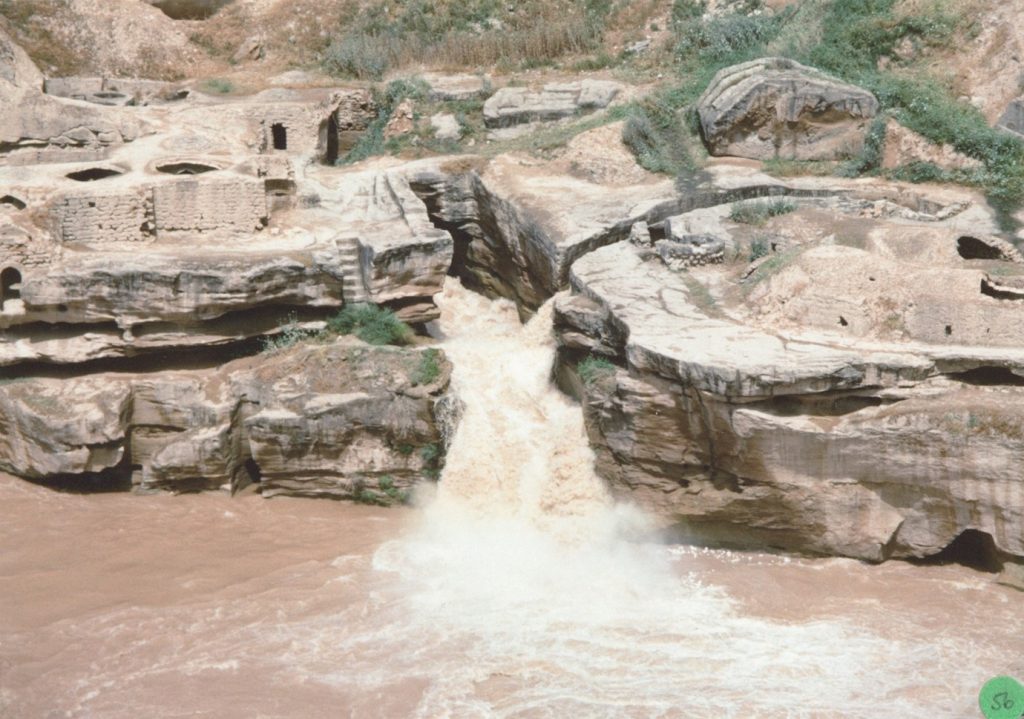
The height of the dam provided at least 10 metres head for any millwheel at the bottom of the cliffs. The mills took advantage of this through the use of what Michael termed a ‘drop-tower’, otherwise called a borjab or tanureh in Iranian. This is a tall shaft, which would be filled with water from above in order to create sufficient pressure. A nozzle at the foot of the tower released the water onto the waterwheel. Michael suggested that one drop-tower might power several mills situated at different levels.
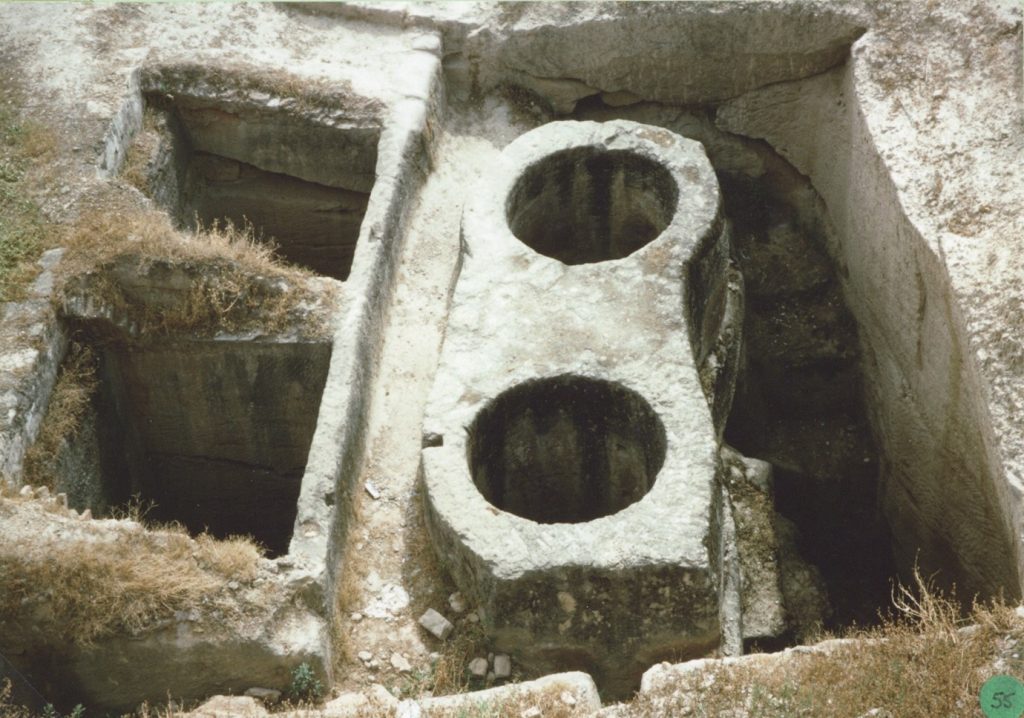
Top of drop towers, which would fill with water to provide a head of water for the mill at the foot of the tower.
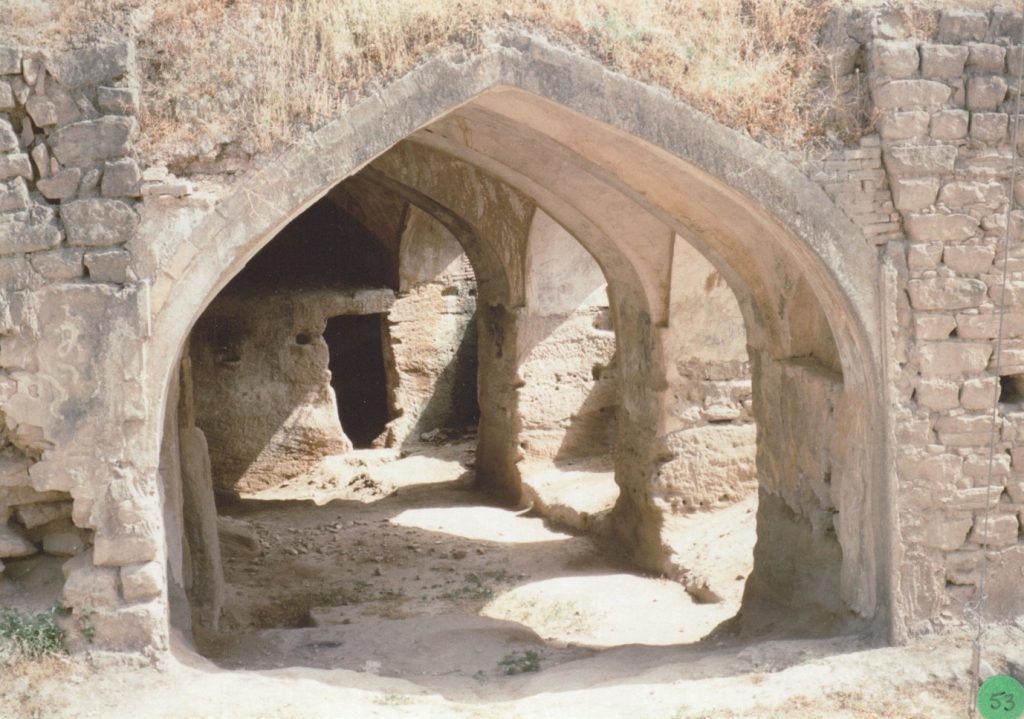
One of the mill buildings.
It was claimed that each mill ground 2500lb of grain daily, and that they supplied flour for the whole of province. Abandoned since the 1960s, by the time of Michael’s visit no machinery remained in the buildings.
Michael Harverson visited a number of other mill sites throughout Iran and wrote up his findings in an article published in Iran, the journal of the British Institute of Persian Studies, XXXI, 1993. His manuscript together with all his photographs is held by the Mills Archive. The entire ‘Shushtar Historical Hydraulic System’ was added to the UNESCO World Heritage List in 2009.
